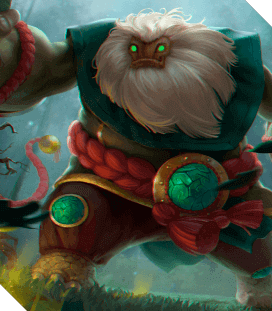Every season, there is a game everybody’s talking about. Eight years ago, in the summer of 2016, it was Pokémon Go, a game that everyone was obsessed with, even people who didn’t follow the latest gaming trends.
The game was innovative not just because it used AR but also because it made players leave their homes and explore the world around them. They would still explore while staring at their phones, but at least they would be walking outside. That was revolutionary at the time, and nothing similar has appeared since then.
How is the game doing in 2024, long after its hype time? Is it profitable? And how much money did Pokémon Go make in all these years? Read on to find out answers to all of these questions.
What is Pokémon Go?
Pokémon Go went viral in 2016, right after its release. It’s an AR mobile game available on both Android and iOS platforms that lets players find, collect, train, and fight Pokémon that appear in locations around them using their cameras. Pokémon can be found on the streets of every city with the help of augmented reality tools. The game quickly became a worldwide phenomenon, captivating millions of players across the globe.
The game is a part of Pokémon, a Japanese franchise that started with a video game in 1996 and went on with manga, anime, and a trading card game. The name Pokémon comes from “pocket monster.” These “monsters” are little creatures of different species, each with a unique appearance and powers.
Pokémon Go was developed and published by Niantic in collaboration with Nintendo and The Pokémon Company.
Pokémon Go Player Count and Popularity
Current Player Numbers
In December 2024, there were over 97 million active Pokémon Go players, according to activeplayer.io count. The maximum amount of daily players was over 26 million. Compared to the same month of the previous year, the numbers have grown by 15%. Here is the table showing dynamics over the last year and a half.
How Many Downloads Does Pokémon Go Have?
Pokémon Go has over 500 million downloads. Half of those downloads happened in the first year, but the game has maintained a stable number of players in the following years.
Is Pokémon Go Still Popular in 2024?
The number of players in the years following 2016 was drastically lower than the year of the release. It may look as if the game was just a momentary hype that didn’t last, but at a closer look, you’ll see that the game hasn’t lost its popularity much.
People who played it at its height in 2016 may just follow the hype, and naturally, they didn’t stay for long. However, the loyal fanbase is still big even after 8 years after the release. And these players are more important for the business than the ones that just downloaded it out of curiosity. Long-time players are the ones who are most likely to spend money in-game, and that’s what matters for the game developers.
Pokémon Go Revenue and Earnings
How Much Money Has Pokémon Go Made?
The data on Pokémon Go earnings is based on player spending (in-app purchases). From this source, by the end of 2024, Pokémon Go had made $8 billion. This doesn’t include the money from sponsor locations and the amount of money people spent on the Niantic web shop, where players can purchase game items. The shop was launched in 2023, and probably a part of in-app spending has shifted there.
How Much Money Does Pokémon Go Make a Year?
Based on the data on in-app spending, we know that Pokémon Go earns $800,000-900,000 a year through App Stores. In pandemic years, Pokémon Go annual revenue has been higher, reaching $1,3 billion in in-app purchases.
Pokémon Go Profit Analysis
The results of tracking in-app purchases and adjusting to inflation show that the game hasn’t been growing its player spending in recent years. However, it doesn’t mean that the Pokémon Go team isn’t very good at monetization strategies. Here is an example.
When we see the graph of the games’ earnings, a spike during the pandemic isn’t surprising. Most games had seen a rise in popularity when people were locked down and had more free time. However, it’s not so easy in the case of Pokémon Go, a game that requires players to go out and visit specific locations.
It seems that the game would have a crisis period when most players had limited mobility during the lockdowns. Yet it wasn’t the case — Pokémon Go managed to gain new users and earn extra by introducing several innovations to the game that made it possible to play without having to go out — remote raids, GO Battle League, and Special Research stories, virtual events, and daily free items. Later, they canceled some of the pandemic innovations to return to their initial format and get income from sponsor locations again.
All in all, the profit of Pokémon Go is stable, as the game has diverse revenue streams. Let’s take a closer look at them.
Revenue Models of Pokémon Go
Pokémon Go operates on a freemium model. It’s free to play, but players can benefit by paying—for example, decreasing the waiting time for the next Pokémon to appear.
How Does Pokémon Go Make Money?
Pokémon Go has several revenue streams: in-app purchases, advertising (sponsored locations), ticketed events, and merchandising. These are typical for most viral video games, but using advanced technologies like AR gives Niantic some extra opportunities.
In 2024, they announced the creation of a Large Geospatial Model (LGM) to revolutionize spatial intelligence for augmented reality (AR) and beyond. Although this news has raised more concerns about privacy, for the business, it means a potential for big profits from such a model, which wouldn’t have been possible without millions of people scanning their surroundings in search of Pokémon.
In-Game Purchases
Like most freemium games, in-game purchases are the main revenue stream for Pokémon Go. The currency is called PokéCoins, and it can buy use Poké balls (containers for capturing Pokémon), items to attract them, double XP, and storage upgrades that allow players to hold more Pokémon.
PokéCoins can also be earned by completing game tasks, but buying is much easier and faster.
Advertising (sponsored locations)
Since the game requires players to leave home and visit various locations, business owners use it as an opportunity to increase traffic to their cafés or shops. Starbucks and McDonalds paid to be included on the list of Pokémon Go locations.
Starbucks had many PokéStops, and offered Pokémon-themed drinks to clients. People come to catch a rare species and grab a coffee on their way.
Ticketed Events
The number of events in the game is enormous. From big events like the annual Pokémon Go Fest to regular Community Days, there is always something going on in the world of Pokémons to attend. Some events are location-based, while others are virtual.
21,000 attendees at Pokémon fest in Chicago
Image source: Niantic
The prices typically vary from $1 to $20. However, some events offer additional in-game purchases that maximize the event experience. For example, the cost of the base ticket and all the additional items for the Into the Wild event (November 2024) would reach up to $340.
Some events are created in collaborations—with locations like those described above or with other popular brands or celebrities—for example, Ed Sheeran, Uniqlo, The North Face x Gucci.
H2 Want to Develop a Game Like Pokémon Go?
There are many games with augmented reality on the market, but Pokémon Go is the only AR game that went viral and became a cultural phenomenon. What it takes to make a successful game is not just technology knowledge — it’s an exceptional game design, art, and monetization strategy. This is what makes Pokémon Go so successful and profitable. If you need a partner to develop the next hit, contact our professionals, and we’ll see what we can do for you.









![Indie Game Development: Guide to Revenues, Most Profitable Genres & Monetization [+10 Best Indie Games 2024]](https://kevurugames.com/wp-content/uploads/fly-images/11949/indie-pre-138x138.jpg)
